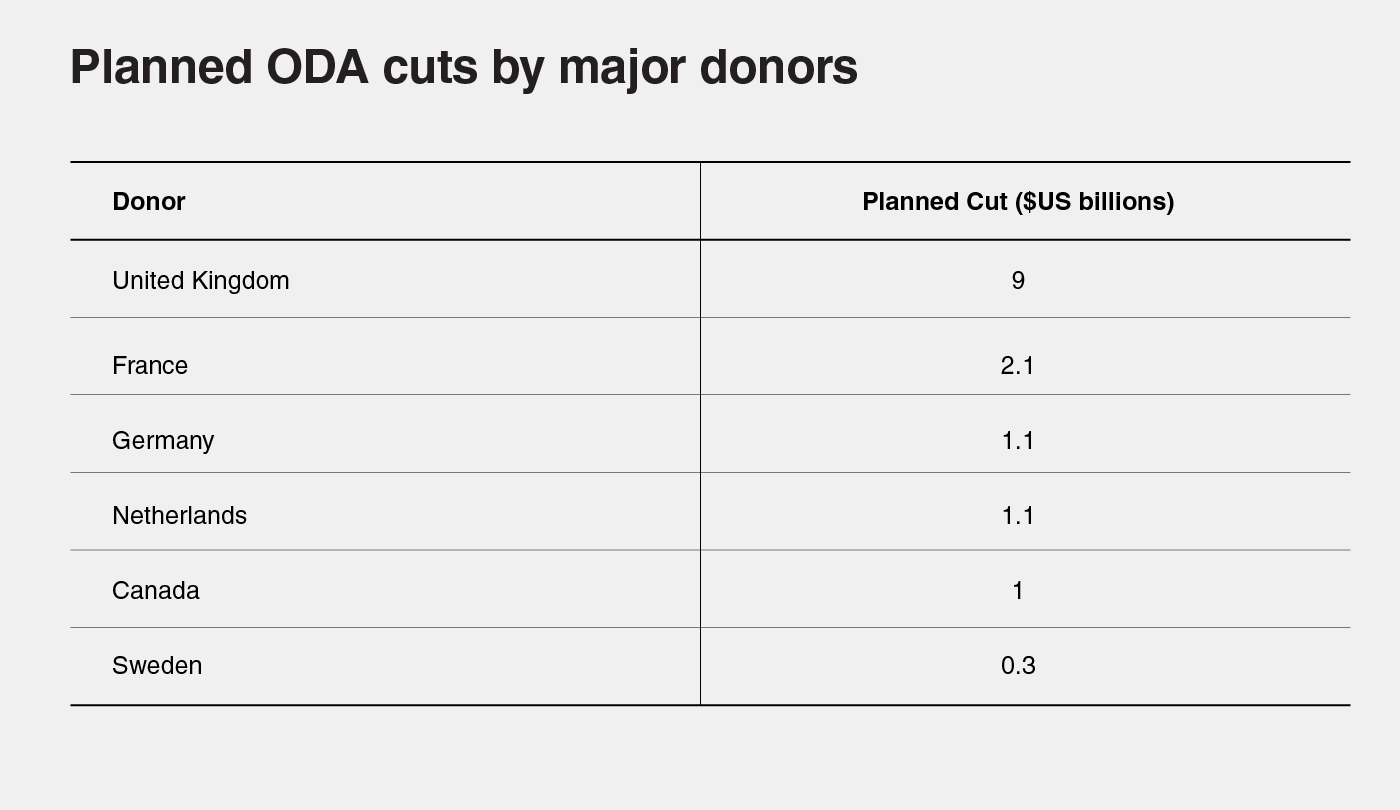Official Development Assistance (ODA) is facing unprecedented challenges. Rising geopolitical tensions, shifting donor priorities and economic constraints are reshaping international aid flows.
Since 2021, ODA flows have undergone significant realignment. While traditionally focused on long-term development projects, recent trends indicate a growing shift towards emergency relief and security-driven aid. A key example is Ukraine, which in 2023 received $37 billion in ODA – approximately 14 per cent of total global ODA allocations for that year. This has resulted in a proportional decline in aid to other regions, particularly sub-Saharan Africa and Latin America, which are grappling with rising political instability and economic uncertainty.
The focus on crisis response has also led to a surge in earmarked funding, where donor countries specify how and where aid must be spent. While this allows for more immediate responsiveness to crises, it comes at the cost of flexibility for long-term development initiatives. The reliance on voluntary contributions to multilateral agencies has further exacerbated this issue, reducing the predictability of funding for sustainable development programs.
Domestic political shifts in major donor countries are playing a crucial role in shaping the future of ODA. In January 2025, the new US administration introduced a 90-day pause on foreign development assistance as part of a broader review of aid efficiency and alignment with national security interests. Although this freeze was later blocked, it signalled a shift in priorities that could have lasting effects on global ODA flows.

Similarly, European nations are facing competing fiscal pressures. With defence spending on the rise due to security concerns linked to the war in Ukraine, European Union (EU) countries are reconsidering their ODA commitments. Proposals to increase military spending to five per cent of GDP could divert as much as $560 billion from other sectors, including international aid. The United Kingdom has already announced a 50 per cent reduction in its ODA commitments beyond previously planned cuts, with France, Germany, and the Netherlands following suit.
While traditional donors such as the United States and EU countries continue to dominate ODA contributions, emerging players like China, Saudi Arabia, and Türkiye are reshaping the funding landscape. China’s foreign aid, estimated at $3-4 billion in 2023, remains relatively small compared to Western donors but is growing in influence. However, much of China’s assistance takes the form of concessional loans rather than outright grants, raising concerns about debt sustainability for recipient countries.
Despite these emerging donors’ increasing engagement, they are unlikely to fill the gap left by reductions in Western ODA commitments. In 2023, China, Saudi Arabia, and Türkiye collectively accounted for less than five per cent of total ODA flows, underscoring the continued reliance on traditional donor nations.
The decline in ODA is particularly concerning for nations that rely heavily on international assistance. Countries such as Afghanistan, Yemen, Somalia, and the Central African Republic – already among the least peaceful nations – face severe economic consequences from reduced aid flows. The table below illustrates that Afghanistan, for example, stands to lose up to 12 per cent of its Gross National Income (GNI) due to anticipated cuts.

In sub-Saharan Africa and Latin America, the reduction in ODA could have far-reaching consequences, exacerbating existing economic downturns and fuelling further instability. Development programs in these regions risk stagnation, with potential increases in migration pressures as economic conditions worsen.
Given the projected cuts of between $50 billion and $115 billion in the coming years, the focus must shift to ensuring that available ODA funds are used as efficiently as possible. Several key areas for improvement have been identified:
The resilience of the international development system is facing a stern test. While major cuts to ODA appear inevitable, there is an urgent need to rethink how aid is delivered and measured for impact. Greater transparency, efficiency, and coordination will be crucial in ensuring that ODA continues to fulfil its core mission of supporting economic development and improving global welfare.
— Download the Official Development Assistance Report
— Request a Media Interview.